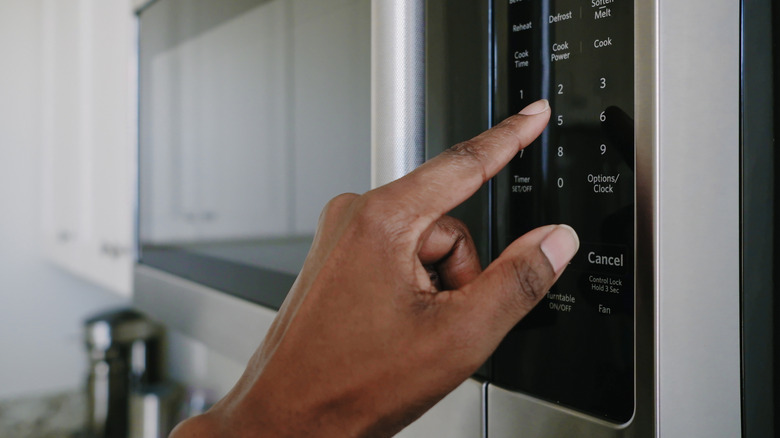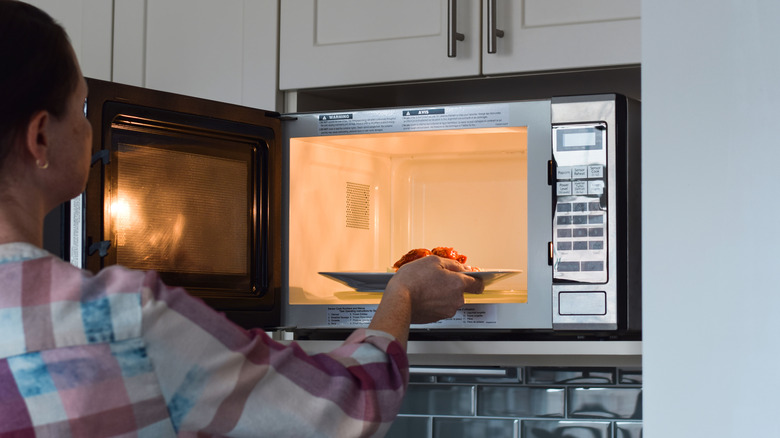Start Using This Microwave Button For Seriously Better Meals
Microwave ovens are known for heating food quickly, but this isn't the only way they can be used. The often underused power level button can be one of the most useful features you use, if you know what to do with it. It can prevent your meals from overheating or drying out, ensuring the appliance is used as effectively as possible.
Use the power level button to do exactly what it says: Reduce or increase the power of the microwave. This doesn't diminish or enhance the strength of the microwaves being emitted; It changes the frequency at which they're released into the food. Changing the power level to 5 will set it to 50% power, meaning that half the microwaves will be released into the food throughout the cook time. This can help prevent your food from heating unevenly.
Different foods will require different levels for the ideal preparation. Microwaves work by agitating the water molecules inside the food, generating heat. If the food is moist, it can dry out if cooked in the microwave at full power, and if it's dry, it may burn or char. Cooking food at a lower power level than recommended doesn't risk ruining your food, but it will take much longer.
What foods should be cooked at which power levels?
The lower power levels on your microwave are best used for heating things that shouldn't get too hot or get fully cooked. If you want to defrost meat without cooking it or soften ice cream without it melting, use lower power levels. You can even use these settings for items like fruit — as long as you're not trying to heat it too much.
Using the medium levels on the microwave is good for foods that shouldn't get too hot too quickly but still need to be heated through. If you've ever heated a cream sauce and had it separate into a chunky, greasy mess in the microwave, using the medium levels like 5, 6, and 7 will help you avoid that. It can also help to safely microwave meats like chicken or steak so they don't dry out during the reheating process.
Heating food on high can be a bit of a risk unless you've got something that specifically recommends it. A high setting will certainly get the food hot, but it may not heat evenly and could burn it if left for too long. However, heating soups or beverages on high is ideal because you want to get those molecules moving, and unless you leave them in for an unreasonably long time, you likely won't end up drying anything out.

